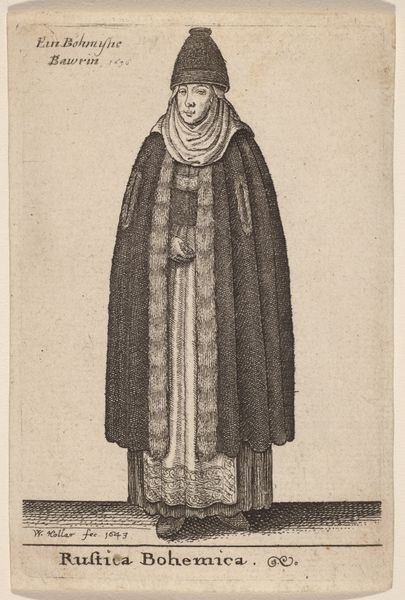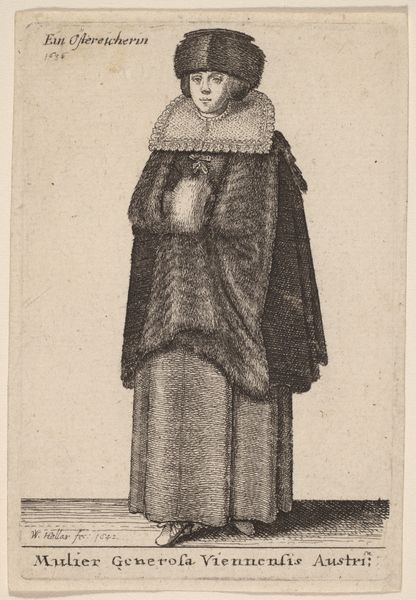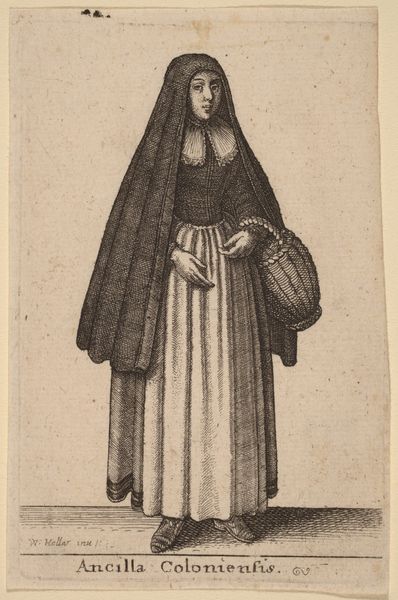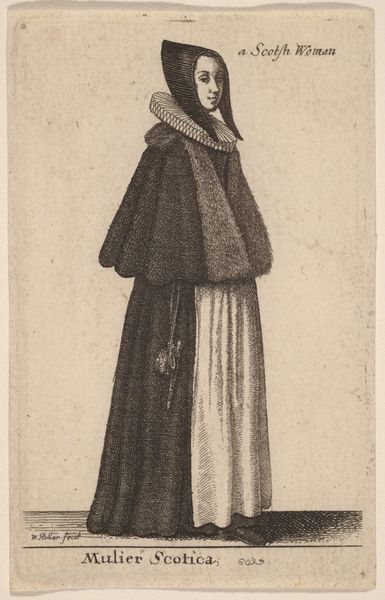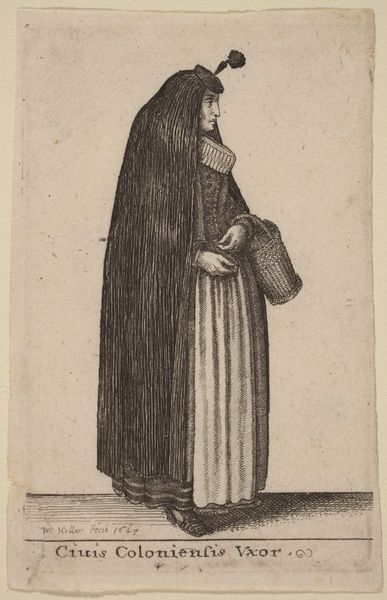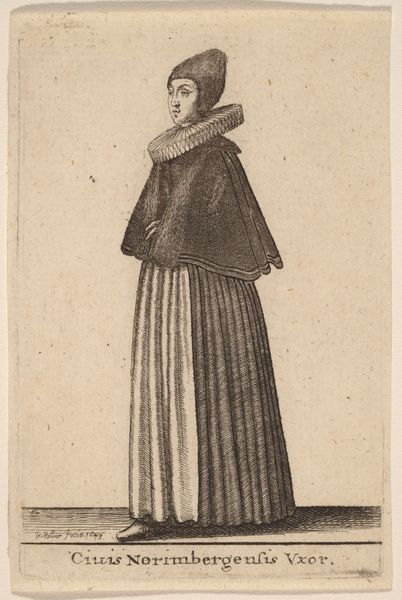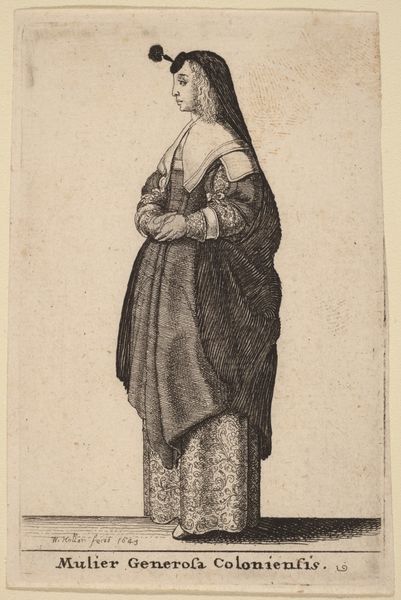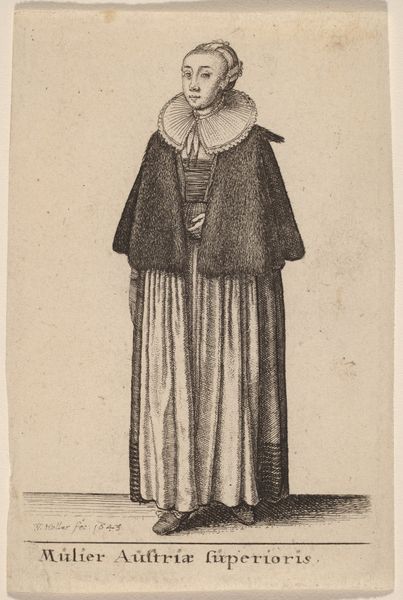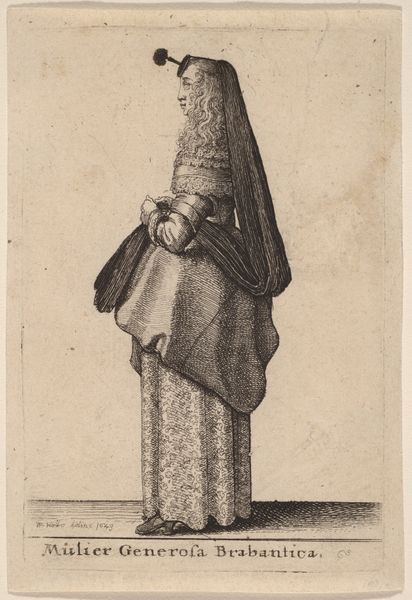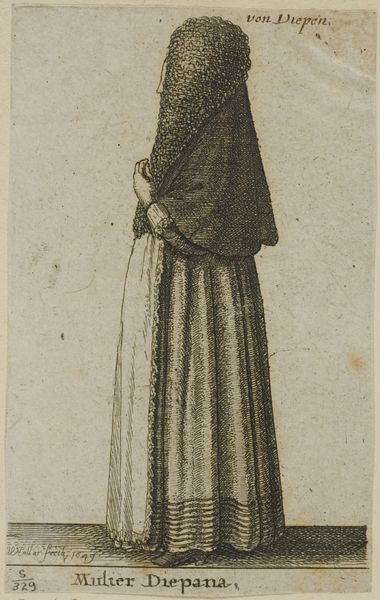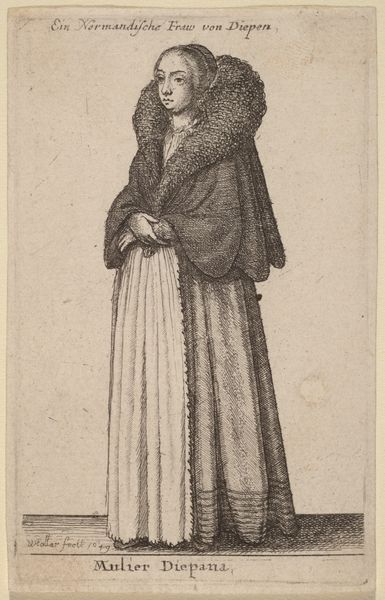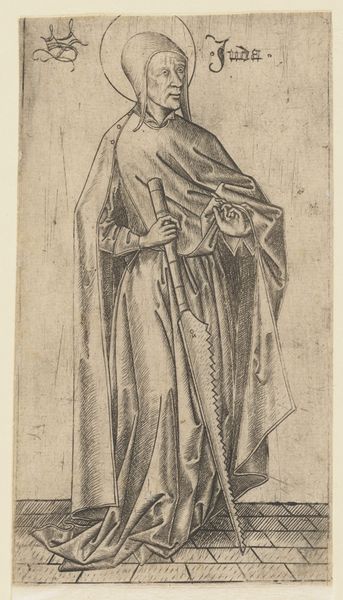
print, engraving
#
portrait
# print
#
old engraving style
#
figuration
#
portrait drawing
#
history-painting
#
engraving
Copyright: National Gallery of Art: CC0 1.0
Curator: Here we have "Mulier Religiosa Antuerpiensis," an engraving by Wenceslaus Hollar. Editor: It’s overwhelmingly dark, isn’t it? Like a shadow given form. The subject’s figure nearly consumes the entire image with these cavernous folds of fabric. Curator: It's fascinating to consider this work in relation to the booming print market of the 17th century. Hollar's prints offered a glimpse into the social fabric of different regions. Here, we see an almost anthropological depiction of a religious woman from Antwerp. Editor: Those tight, etched lines suggest a real dedication to documenting the textile itself – the weave and the weight. You can almost feel the texture, that heavy drape of cloth. I’d bet it’s dyed with something like woad or madder, a labour-intensive process adding to the overall value. Curator: Precisely. Prints such as this also played a significant role in shaping perceptions and perhaps even solidifying stereotypes. How were women in religious orders perceived, and how might an image like this influence those views? Consider also Hollar's own position. He was a Bohemian working in England; what perspective did he bring to his depiction of a woman from Antwerp? Editor: The very act of translating such details to the copperplate has me intrigued. The labor involved must have been substantial, the intense focus needed to reproduce the subject's attire through mere lines. How do material conditions influence artistic choices like this? Curator: A wonderful question. Printmaking at this time enabled the wide dissemination of images and, potentially, new ideas about social roles, geography, and cultural identities. So, by considering the political context of its moment of creation, what insights can we have? Editor: Thinking of its potential mass distribution changes how I view it; rather than simple portraiture, this printed image becomes a tangible artifact, the product of skill, labor, and specific materials. What did this represent about craft in Antwerp versus London, for instance? Curator: It makes you really consider the global reach of such images and the complexities of interpreting visual culture across time. Editor: Absolutely. When you examine the raw materials used, it raises questions about what constitutes a truly “original” artwork in a world of such reproductive capacity. Thank you for providing the context.
Comments
No comments
Be the first to comment and join the conversation on the ultimate creative platform.
